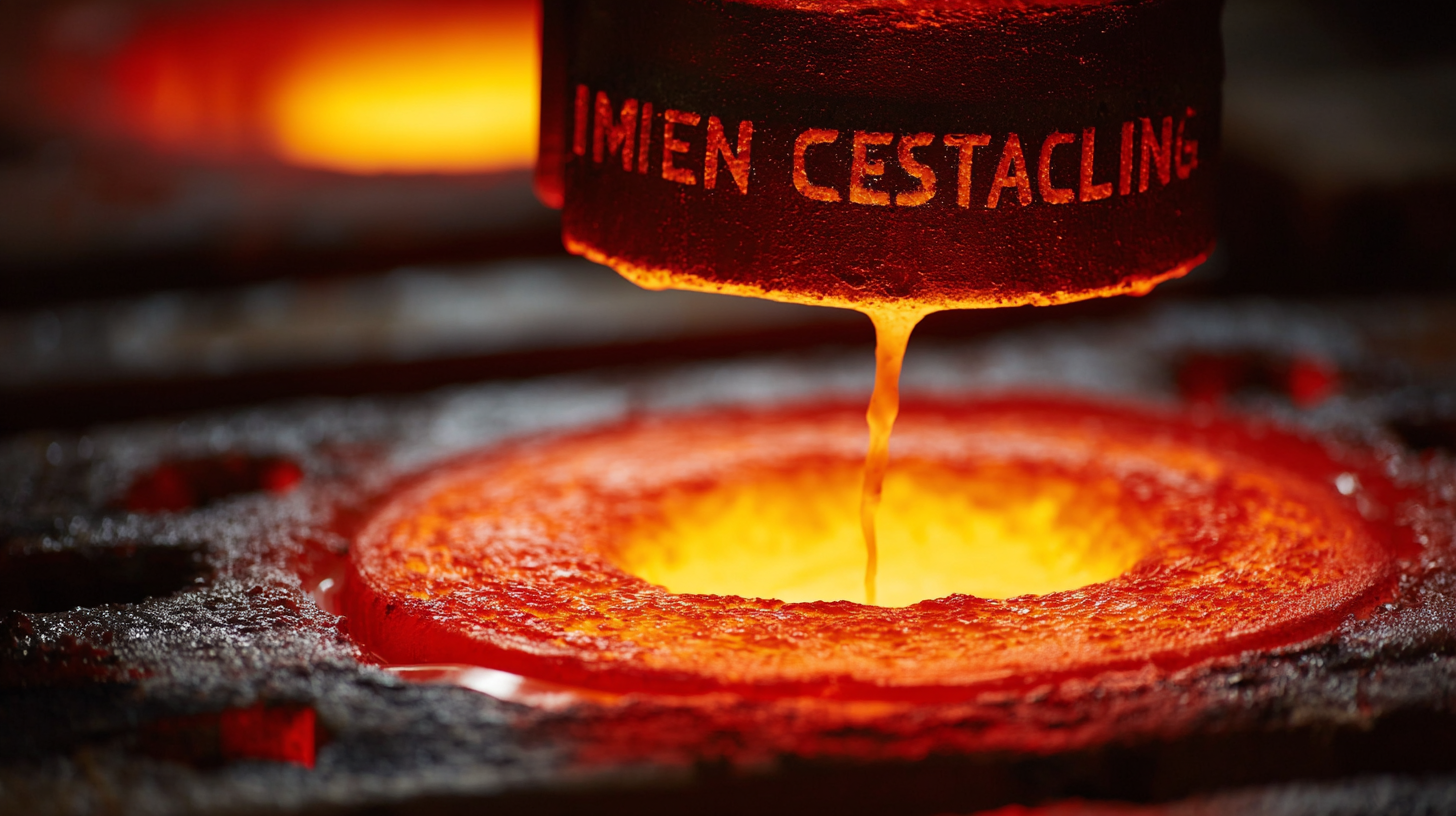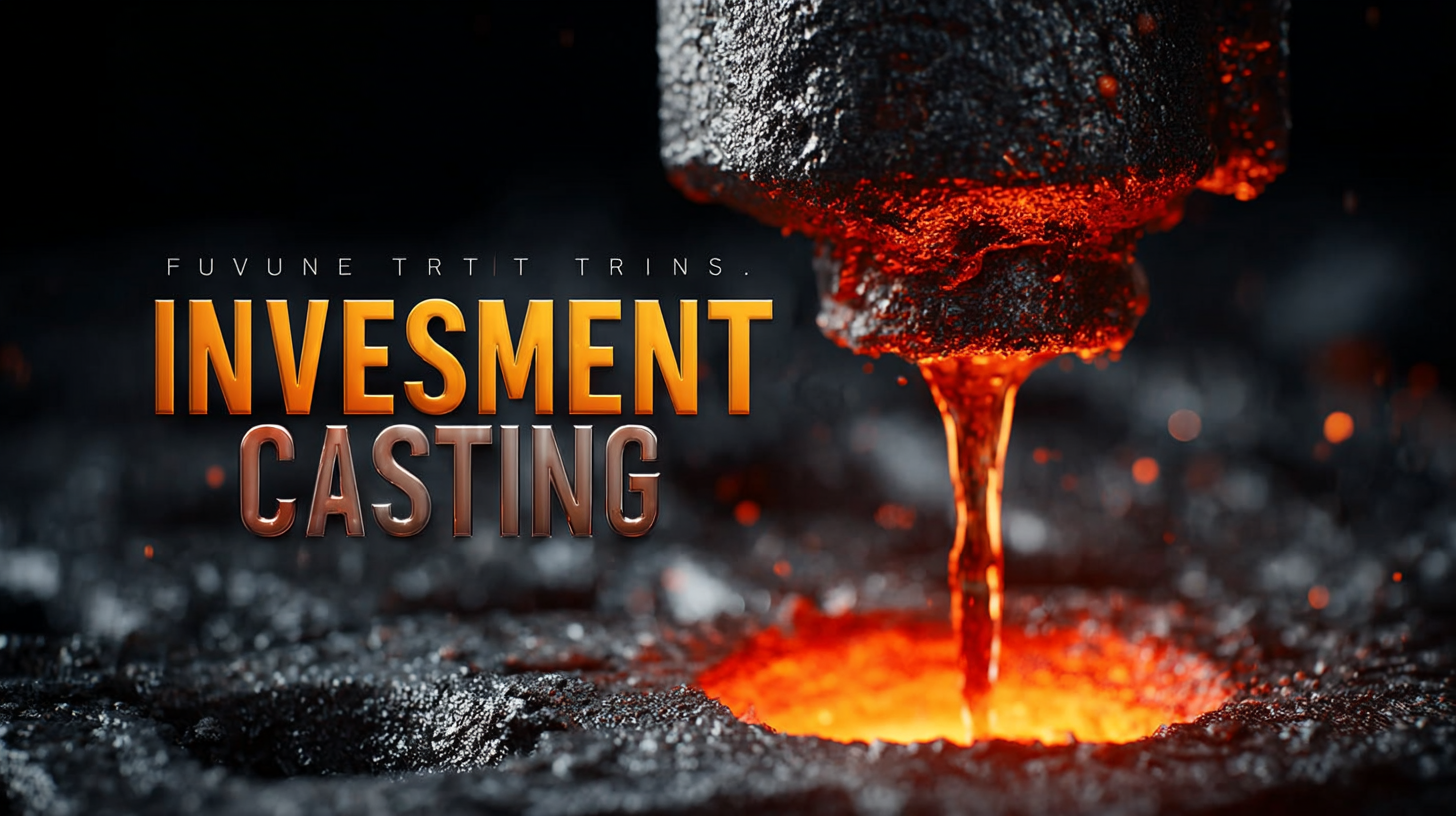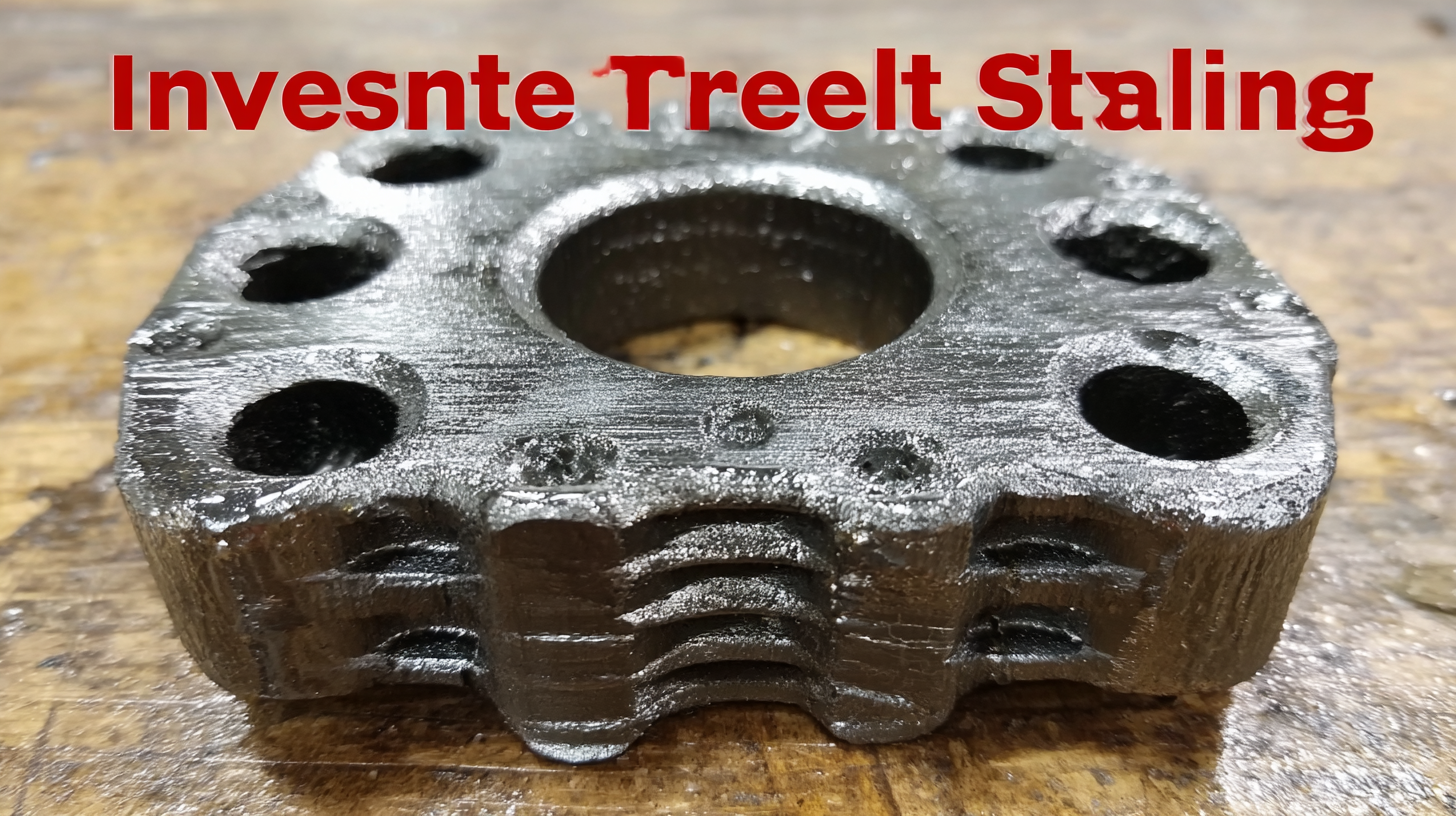 +86 180 0293 5268
+86 180 0293 5268






As we look ahead to 2025, the landscape of investment casting steel is poised for transformative changes that will significantly influence its production and application across various industries. Investment casting steel has long been recognized for its versatility and precision, but emerging technologies and evolving market demands are set to reshape its future.

This blog will explore the key trends driving industry growth, including advancements in materials science, increased automation, and sustainable manufacturing practices. With an emphasis on enhancing efficiency and reducing environmental impact, the investment casting steel sector is adapting to the challenges and opportunities of a rapidly changing world.
Join us as we delve into these pivotal developments that are crucial for stakeholders aiming to stay competitive in this vital industry.
Investment casting steel is an essential material in various industries due to its excellent mechanical properties and versatility. Among the different types of investment casting steels, carbon steel stands out for its strength and affordability. With carbon content typically ranging from 0.2% to 1.5%, this type offers remarkable toughness and wear resistance, making it ideal for applications in machinery and automotive components. Its ease of machining and welding further enhances its appeal, paving the way for innovative designs in future projects.
Stainless steel, another prominent player in the investment casting realm, is recognized for its exceptional corrosion resistance and aesthetic appeal. The unique properties of stainless steel, particularly its ability to withstand harsh environments, make it a preferred choice for industries such as aerospace and food processing. Notably, grades like 304 and 316 are widely used, providing a balance of strength and ductility. As the demand for lightweight and durable components grows, the investment casting industry is expected to innovate further, exploring advanced alloy formulations that combine the best characteristics of both carbon and stainless steels.

Investment casting steel products are gaining significant traction within various industries due to their exceptional properties and versatility. The precision casting market is witnessing substantial growth, driven by the rising demand for high-precision components in industries such as aerospace, automotive, and medical devices. Reports indicate that the precision casting market is projected to reach approximately $12 billion by 2025, reflecting a compound annual growth rate (CAGR) of over 6%. This growth is underpinned by the advantages of investment casting, including its ability to produce complex shapes with tight tolerances, leading to reduced material waste and faster production times.
In addition to traditional investment casting applications, the increased use of elastic alloys is reshaping industry trends. These specialized alloys exhibit unique properties that allow for reversible deformation under stress or specific temperature conditions, making them ideal for applications in the aerospace and automotive sectors where performance and reliability are paramount.
The versatility of elastic alloys opens up new avenues for innovation, with their inclusion in everything from structural components to intricate mechanisms. As industries continue to prioritize efficiency and precision, the development and adoption of advanced investment casting steel products are expected to play a crucial role in shaping the future landscape of industrial manufacturing.
As the global steel casting market approaches a valuation of USD 33.90 billion in 2025, the demand for specialized casting steels is set to grow significantly. By 2029, the market is projected to expand to USD 42.18 billion, achieving a compound annual growth rate (CAGR) of 5.6%. This growth can be attributed to advancements in industries such as automotive, aerospace, and construction, where the need for improved performance and durability in steel components is paramount.
One of the key trends driving this demand is the increased focus on high heat resistance materials, with kyanite emerging as a transformative player in the ceramics and refractories industries. As kyanite demonstrates exceptional thermal stability, industries are increasingly incorporating it into their production processes to enhance the performance of casting steels, thus widening the scope of applications across various sectors.
Tips: When considering investments in specialized casting steels, focus on suppliers who prioritize quality and innovation in materials. Research emerging trends such as the use of kyanite in steel production to ensure your investments are aligned with market advancements. Additionally, staying informed about regulatory changes in the industry can help in making strategic decisions for long-term growth.
The investment casting steel market is poised for significant growth by 2025, driven by advancements in casting technology and increasing demand across various industrial applications, including metallurgy, foundries, and metal forming processes. Among the different types of investment casting steels, key materials such as carbon steels, alloy steels, and stainless steels are shaping the landscape. Each steel type presents unique mechanical properties suited for distinct applications, thereby affecting the selection process in industries that prioritize precision and durability.
Moreover, the furnace types utilized in the investment casting process play a crucial role in determining operational efficiency and product quality. Electric furnaces are favored for their energy efficiency and environmental considerations, while gas and oil furnaces remain popular for their rapid heating capabilities. Induction furnaces, known for their precise temperature control, are increasingly being adopted in high-volume production settings. Understanding these dynamics is essential for stakeholders aiming to navigate the investment casting sector effectively and capitalize on emerging opportunities.
| Steel Type | Density (g/cm³) | Yield Strength (MPa) | Tensile Strength (MPa) | Applications | Future Growth Potential (%) |
|---|---|---|---|---|---|
| Carbon Steel | 7.85 | 250 | 500 | Automotive Parts, Structural Components | 5% |
| Alloy Steel | 7.85 | 300 | 600 | Mechanical Components, Aerospace | 7% |
| Stainless Steel | 7.93 | 215 | 580 | Chemical Processing, Food Industry | 10% |
| Tool Steel | 7.85 | 400 | 800 | Cutting Tools, Molds | 8% |
| High-Speed Steel | 8.00 | 300 | 700 | Cutting Tools, Drills | 6% |
As the investment casting industry evolves, the future of casting steel technologies and materials promises significant innovations that will drive growth in 2025. Advanced materials, such as high-strength alloys and enhanced composites, will not only improve the structural integrity of cast parts but also reduce overall production costs. These innovations will enable manufacturers to cater to diverse industries, from aerospace to automotive, enhancing performance and efficiency.
Tip: Stay updated on material science advancements to ensure your operations leverage the latest technologies. Implementing smart manufacturing techniques, such as real-time monitoring and data analytics, will optimize your casting processes, leading to improved product quality and reduced waste.
Furthermore, sustainable practices are expected to take center stage, with a push towards eco-friendly materials and processes. Innovations like recycled steel and advanced coating techniques will reduce environmental footprints while maintaining quality standards. This shift not only meets regulatory demands but also appeals to environmentally conscious customers.
Tip: Consider collaborating with material scientists to develop sustainable casting solutions tailored to your specific needs. Emphasizing sustainability in your brand can attract new clients while contributing to a greener future in the investment casting industry.

